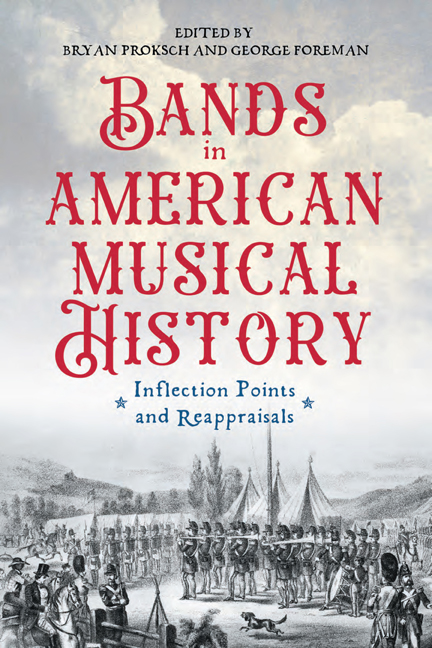1 - P. S. Gilmore's 1864 Visit to New Orleans: Prelude to the Boston Peace Jubilees
Published online by Cambridge University Press: 11 May 2024
Summary
George Foreman
At 3:00 p.m. on Tuesday, June 15, 1869, the anticipation and excitement that had filled the city of Boston for months reached a climax. The eager audience packing the immense coliseum marveled at the gigantic organ and the musical forces that numbered in the thousands arrayed before them. After a prayer offered by Rev. Edward Everett Hale, a welcome from Boston Mayor Nathaniel B. Shurtleff, and a lengthy speech by Alexander H. Rice, P. S. Gilmore finally entered the stage. The ovation from audience and musicians alike that greeted Gilmore in what he called “the proudest moment of his life” swelled ever larger as he mounted the podium. On his downbeat, ten thousand voices in the chorus, a thousand orchestral musicians, and the gigantic festival organ responded with Martin Luther's hymn A Mighty Fortress Is Our God. “The grandest volume of song that ever filled human ear,” wrote Gilmore, “rolled like a sea of sound through the immense building.” Conceived by Gilmore to commemorate the end of the American Civil War, the National Peace Jubilee, which the Boston Herald called “the grandest musical feast of all time,” had begun.
Everything about the week-long National Peace Jubilee was big. The coliseum, which Gilmore declared to be “the largest [building of its kind] ever erected in America,” was immense—as wide as a football field, almost twice that long, and as tall as a ten-story building. Bostonians had followed the progress of the construction of the coliseum for weeks. The chorus was huge. A rehearsal in the Boston Music Hall shortly before the festival began included 3,000 voices, which was less than a third of the 10,404 singers who eventually formed the chorus for the jubilee performances. The orchestra included 525 members. For certain works, a 486-piece military band joined with the orchestra, for a total of 1,011 musicians. Even the bass drum was enormous. Emblazoned with “Let Us Have Peace,” the motto of the jubilee, the monster-sized drum towered over the musicians of the orchestra and band.
In 1872, buoyed by the success of the National Peace Jubilee three years earlier, Gilmore organized the World Peace Jubilee to mark the end of the Franco-Prussian War.
- Type
- Chapter
- Information
- Bands in American Musical HistoryInflection Points and Reappraisals, pp. 9 - 53Publisher: Boydell & BrewerPrint publication year: 2024



